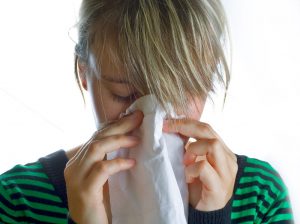When it comes to keeping your home comfortable and energy-efficient, you might have heard about something called an Energy Recovery Ventilator, or ERV. But what exactly is an ERV, and why should you consider getting one installed? This blog will explore what ERVs are, how they work, and the many benefits they offer for homeowners looking to improve their indoor air quality and reduce energy costs. If you have any questions about energy recovery ventilators in Fort Hamilton, Brooklyn, don’t hesitate to contact us for more information.
Bob Mims Heating & Air Conditioning Blog : Posts Tagged ‘energy recovery ventilator’
What Is an Energy Recovery Ventilator?
Monday, September 2nd, 2024Improve your IAQ with an HRV or ERV
Monday, December 2nd, 2019 You like enjoying the clean warm air that is being pumped out of your vents. But every once in a while, that air can feel a little artificial and you wish you could open up a window and enjoy the fresh air too. Unfortunately, it is too cold out and you’d rather not run your heater just to have the hot air get sucked outside.
You like enjoying the clean warm air that is being pumped out of your vents. But every once in a while, that air can feel a little artificial and you wish you could open up a window and enjoy the fresh air too. Unfortunately, it is too cold out and you’d rather not run your heater just to have the hot air get sucked outside.
What if we told you there was a way to meet in the middle and get fresh air without wasting warmth or energy? There is a way and we think you should know about it. If you are craving fresh air during the cool months when you are running your heater, you may want to look into Heat Recovery Ventilators (HRVs) and Energy Recovery Ventilators (ERVs). These nifty systems can provide you the best of both worlds and are available through your local Staten Island, NY, HVAC company.
If you are ready to learn more about HRVs and ERVs, we urge you to read on.
The Difference Between Heat and Energy Recovery Ventilators—Revealed!
Monday, April 22nd, 2019 There are many ways you can improve your home’s indoor air quality and its ventilation. One of the most useful is the installation of an energy recovery ventilator (ERV) or heat recovery ventilator (HRV), devices which allow fresh air into your house without it drastically changing the indoor temperatures and placing more stress on the AC or heater.
There are many ways you can improve your home’s indoor air quality and its ventilation. One of the most useful is the installation of an energy recovery ventilator (ERV) or heat recovery ventilator (HRV), devices which allow fresh air into your house without it drastically changing the indoor temperatures and placing more stress on the AC or heater.
We usually talk about energy and heat recovery ventilators together, but they aren’t the exact same device. When people are looking for better home ventilation, they’re often curious about what’s different between the two. We’ll explain ERV vs. HRV below.
An Energy Recovery Ventilator for Summer Weather
Monday, April 23rd, 2018 It’s not quite full spring weather yet here in Staten Island, but it’s definitely the time to start preparing for it. One of the essential steps is to schedule maintenance for your air conditioning system or heat pump so that it’s ready to go when the first heat hits.
It’s not quite full spring weather yet here in Staten Island, but it’s definitely the time to start preparing for it. One of the essential steps is to schedule maintenance for your air conditioning system or heat pump so that it’s ready to go when the first heat hits.
But you can also take this time to help improve ventilation for the summer. It’s an unfortunate fact of modern living that houses are so well sealed against the outdoor weather to help them stay energy efficient that they don’t allow for proper fresh air circulation. But if you open up the windows in your house during the summer, what happens? Yes, heat comes in along with the fresh air, and that’s uncomfortable. You can blast the AC to try to overcome the heat, but then your electric bills start to rise.
There is a solution to this problem you can have installed in your ventilation system before summer heat arrives: the energy recovery ventilator (ERV).
How We Can Improve Your Winter Indoor Air Quality
Monday, November 6th, 2017 Winter brings with it more comfort challenges in a home than just ensuring everybody stays warm when the temperatures outside dive. Indoor air quality can become a serious issue because a home is frequently sealed off against the outdoor air to prevent heat from escaping. A sealed-up house will begin to develop stale, dry, and contaminant-filled air.
Winter brings with it more comfort challenges in a home than just ensuring everybody stays warm when the temperatures outside dive. Indoor air quality can become a serious issue because a home is frequently sealed off against the outdoor air to prevent heat from escaping. A sealed-up house will begin to develop stale, dry, and contaminant-filled air.
There are ways to boost indoor air quality during the winter that don’t require you to throw open the doors and windows and allow the outside chill to gust through the rooms while it’s freshening the air. Below are a few of the indoor air quality solutions we can offer you for a more comfortable, healthier winter.
Indoor Air Quality Can Be a Serious Problem in Winter
Monday, January 16th, 2017Question: Where is the air quality worse, outside a home or inside?
You’ll probably answer “outside,” since this is place people associate with pollution. But according to studies, the air quality inside a home (as well as other buildings) can be 3 to 4 times worse than the air outside! Why is this? It’s because a home has numerous sources of pollutants inside it. Just a short list: gas-using appliances, cosmetics, personal care products, hobby products, cleaning supplies, air fresheners, paint, varnish, and pressed wood products. Without any easy way for these contaminants to exit a home, they’ll soon start to build up.
Fresh Air and Energy Saving This Winter with an Energy Recovery Ventilator
Monday, November 21st, 2016There’s a dilemma that homes face when it comes to receiving fresh air while staying warm during the winter. Modern homes are built to trap heat indoors and make them easier to keep comfortable. If cold drafts are getting into a home, it will be much harder to keep warm and the heater will have to run almost constantly.
But this heavy insulation on the house also means there’s little chance to vent out the stale, often contaminant-filled air and replace it with fresh air.


